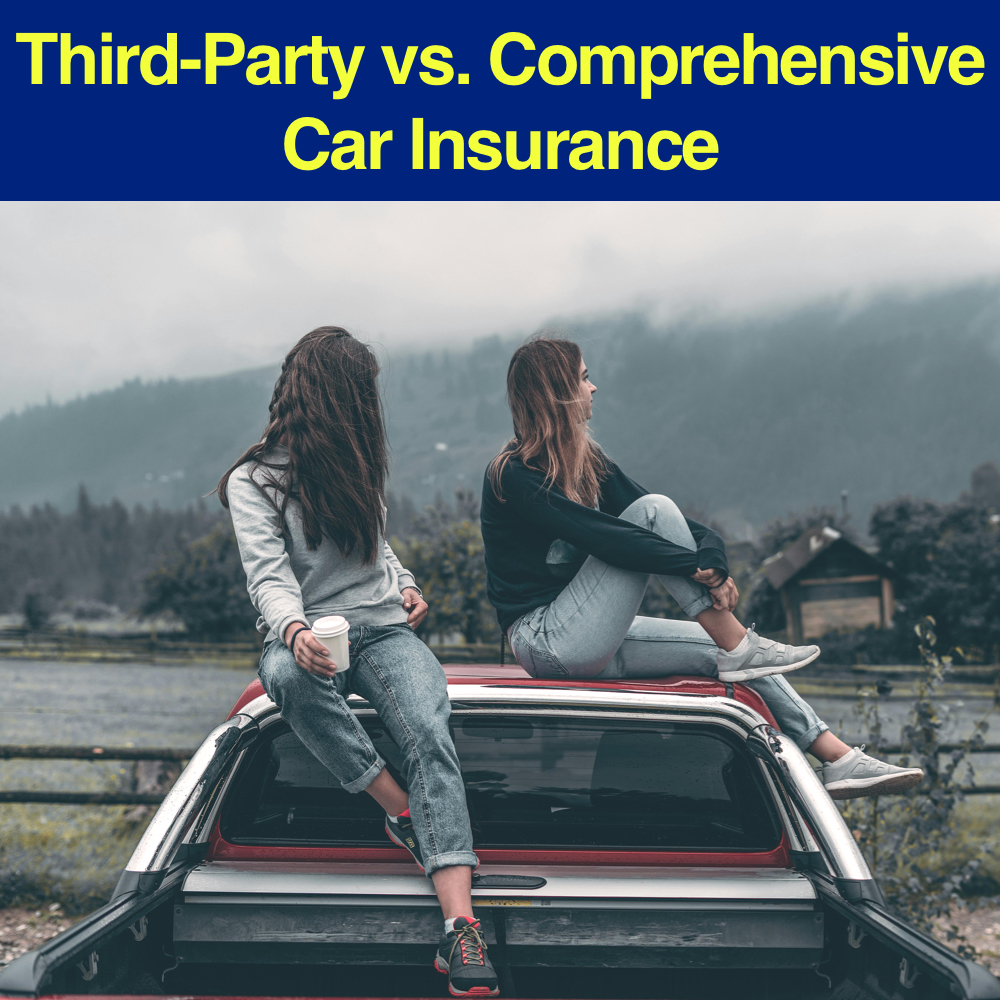Car insurance is a legal requirement in the UK, but choosing the right type of cover—Third-Party, Third-Party, Fire & Theft, or Comprehensive—can be confusing. Each offers different levels of protection and comes with unique advantages and limitations. This guide explores the differences between Third-Party and Comprehensive insurance, helping you decide which is best for your circumstances.

1. What is Third-Party Car Insurance?
Third-party insurance is the minimum legal requirement in the UK. It covers damage or injury to other people, their vehicles, or property if you’re at fault in an accident.
What’s Covered:
- Injury to other drivers, passengers, or pedestrians
- Damage to third-party vehicles and property
- Passengers in your vehicle (excluding the driver)
What’s Not Covered:
- Damage to your own car
- Theft or fire damage to your car
- Personal injury or medical costs for the driver (you)
Who Should Consider Third-Party?
- Drivers of older, low-value cars not worth repairing
- Those on a tight budget seeking the cheapest legal option
- High-risk drivers who find comprehensive cover unaffordable
Important: Third-party isn’t always cheaper. Some insurers charge more due to the risk profile of drivers who choose this option.
2. What is Comprehensive Car Insurance?
Comprehensive insurance offers the highest level of cover. It includes all the benefits of third-party insurance, plus additional protection for your own car and injuries.
What’s Covered:
- Everything included in third-party cover
- Damage to your own vehicle (regardless of fault)
- Fire, theft, vandalism, and natural disasters
- Accidental damage
- Windscreen repairs
- Medical expenses
- Courtesy car (often optional)
What’s Not Covered:
- Wear and tear
- Mechanical failure
- Driving under the influence or without a licence
- Excluded drivers or uses (check policy fine print)
Who Should Consider Comprehensive Cover?
- Drivers of new or valuable vehicles
- Commuters or long-distance drivers
- People who want peace of mind and full financial protection
- Those who rely on their car for daily work or family needs
💡 Tip: Many comprehensive policies are competitively priced—sometimes even cheaper than third-partydue to insurer risk assessments.
3. Cost Comparison: Is Third-Party Always Cheaper?
Not necessarily. While third-party policies offer less coverage, insurers often view those who opt for them as higher risk. As a result:
| Policy Type | Average Annual Premium (UK, 2025 est.) |
|---|---|
| Third-Party | £950+ |
| Comprehensive | £650–£850 (with optional excess) |
Comprehensive may cost less and provide significantly more value.
4. Pros and Cons at a Glance
| Type | Pros | Cons |
|---|---|---|
| Third-Party | Legally compliant, basic, may suit cheap vehicles | No cover for your car, may cost more than you think |
| Comprehensive | Full cover for you and others, better benefits | Slightly higher excess or premium |
5. Factors to Help You Decide
Ask yourself the following:
How much is your car worth?
- If it’s a banger worth £500, third-party might suffice.
- If it’s a new EV worth £20,000, comprehensive is a no-brainer.
Can you afford to repair or replace your car out of pocket?
- If not, choose comprehensive.
How do you use your car?
- Daily use or commuting? Go for comprehensive.
- Rare weekend drives? Third-party might be okay.
What’s your risk tolerance?
- Prefer peace of mind? Choose comprehensive.
- Willing to take on more risk? Third-party could be suitable.
6. Real-Life Example Scenarios
Sarah, 24, drives a 2011 Ford Fiesta worth £1,200.
She chooses comprehensive cover because it’s actually £150 cheaper than third-party, and she gets protection against theft and accidental damage.
Mike, 42, drives a brand-new Tesla for commuting.
Comprehensive is the only sensible option to protect his £40,000 investment.
Lucy, 30, owns a van she uses twice a month.
She opts for third-party to keep costs down, but adds fire & theft to cover potential risks while parked.
7. Final Verdict: Which Is Right for You?
There’s no one-size-fits-all answer. The best policy depends on your car’s value, how you drive, and your budget. However, comprehensive insurance is often the best balance of cost and coverage—even for budget-conscious drivers.
Key Takeaways
- Third-party is legally required, but often not the cheapest.
- Comprehensive offers greater protection and often better value.
- Always compare quotes across insurers; use comparison tools.
- Consider voluntary excess to reduce premiums.
- Review policy details before choosing—don’t assume anything!

Leave a Reply